Lawnmowers have been around since the early 1830s. Only back then were they more designed to cut grass on sports grounds, cemeteries, and extravagant gardens.
These days, almost every single home has one to help maintain its “perfect” patch of green. Rain, hail or shine, it’s quite common to find people out there keeping it under control.
Is it a good idea to use your lawn mower in the rain, though? But, are lawn mowers waterproof for that matter?
Well, they are to some degree, and a little bit of moisture cannot be avoided. However, it’s always recommended to keep your grass cutting equipment as dry as you can to avoid damage such as rust, corrosion, short circuits, etc.
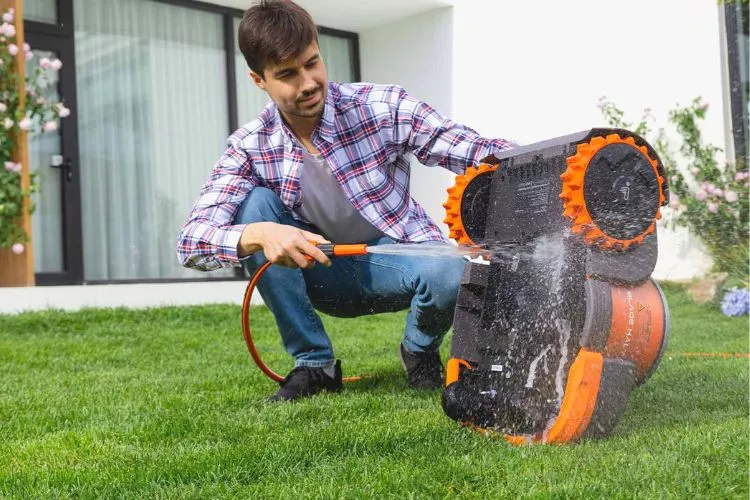
There’s nothing worse than heading out for a mow session and you need to change a part or even struggling to get your mower started.
In this article, we’ll cover all things relating to how a lawn mower can be protected from excess moisture. Let’s dive in, shall we?
Table of Contents
Are lawn mowers waterproof?
Most common lawnmowers today are designed to withstand the rigors of varying weather conditions, minus the snow and ice, of course. That’s not to say that they are “waterproof”; however, they are generally pretty resilient against smaller patches of rain.
In contrast, they should definitely not be used or stored in areas that are subject to or have been subject to heavy rains. If this occurs, there are a range of parts contained in a lawn mower that can become damaged and restrict the ability of the vehicle to function as designed.
The most important parts for keeping dry include anything electric, air filters, spark plugs, fuel tanks, carburetors and any parts under the deck that can potentially rust, including the blade.
It’s safe to say that lawnmowers are water resistant to some degree, but they are definitely not completely waterproof. Keeping them maintained when they are exposed to water will help to ensure their longevity.
Types of Lawn Mowers
There are a few different varieties of lawnmowers available on the market these days. Each of them has its own set of pros and cons when it comes to its ability to mitigate any damage caused by water exposure. Let’s have a look at them in a little more detail.
Gas-powered lawnmowers
Gas powered lawnmowers are one of the best choices to go for if you’re worried about a little rain when mowing. They don’t have as many electrical components to be careful of, which means there’s less chance of short circuits and starter fails.
The only real risk they pose is if the air filter, spark plug, fuel tank or carburetor succumbs to any moisture. Even then, the issue can be corrected, although it can be a slight inconvenience.
Electric lawnmowers
Electric lawnmowers are great in the way that you don’t need to top them up with a fuel source to keep them running, except, of course, the electricity bill.
However, it isn’t recommended that they are used where any moisture is present, mainly because of the risk of electrocution. They do require having an extension lead lying around on the ground or even simply being exposed at the connection points.
Manual reel lawnmowers
Alongside the gas-powered variants, manual reel lawnmowers are probably the safest during unfavourably wet conditions. However, they have a lot less power, making them struggle either way. These types of lawnmowers are simply pushed and pulled and have a spinning drum blade attached.
Battery-powered lawnmowers
Battery powered lawn mowers fit in the same category as the electric types. They can only be exposed to a very small amount of moisture if any. The batteries and their components can easily short-circuit and burn out if any water gets into the inside of the casing.
Battery powered lawn mowers are a great choice for dry, sunny days with dry grass but unfortunately, that’s the limit of their ability without becoming a danger to the user.
Waterproofing in Lawn Mowers
There are not really many ways that you can make your lawn mower any more waterproof than they already are. They are generally designed in such a way and with certain materials that they can withstand minor amounts of moisture.
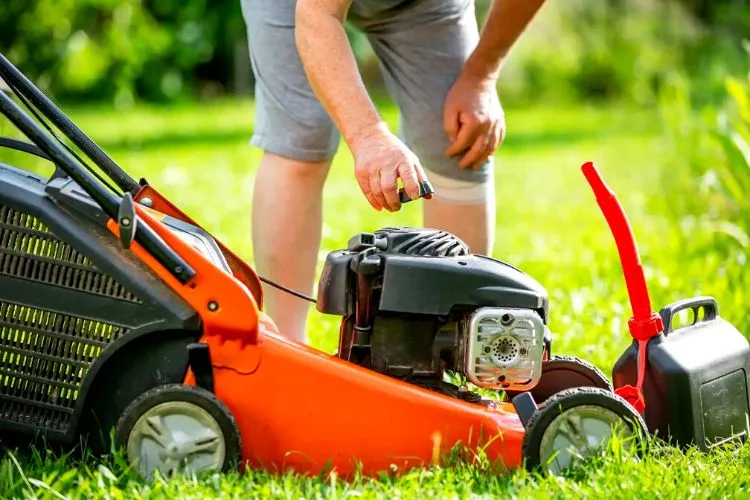
Furthermore, it’s not only the rain that can affect a mower’s ability but also the condition of the grass that is being mowed. For example, an extremely wet patch of grass can do more damage to the underside of the mower than any amount of rain pouring down from above.
Simply cleaning and maintaining all parts under the deck will improve the overall longevity of the lawn mower. Let’s have a look at how lawnmowers are manufactured to help understand their ability to withstand moisture.
How lawnmowers are made waterproof?
In general, the lawnmowers that are produced today are cleverly designed to keep any part that can become damaged by the water well insulated. This includes the cables and their connection points, switches and buttons, fuel lines and tanks, the engine, the blade, etc.
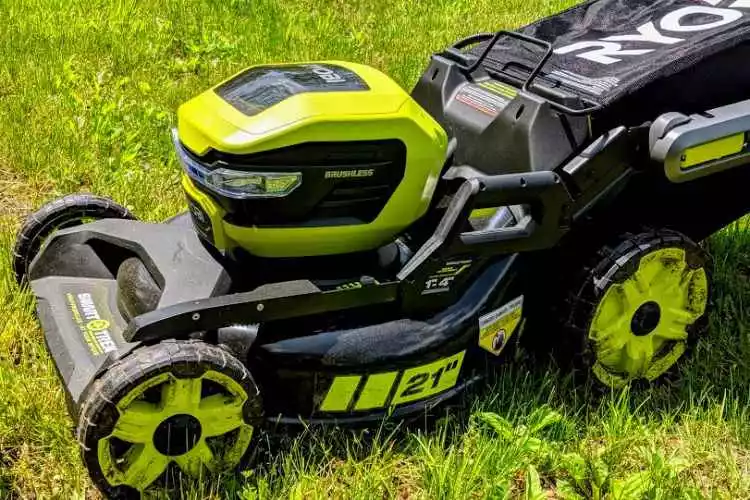
They have also been created in such a way that the water runs off the top of the mower casing, out to the sides and then onto the ground. This reduces pooling and prevents any water from getting stuck in smaller crevices.
Materials used for waterproofing in lawnmowers
Lawnmowers are manufactured using materials such as hard plastics, graphite, metals and rubbers. All of the mentioned materials help to reduce the risk of rust and corrosion as well as moisture being soaked into the mower itself.
Plastics are usually used to create the outside shell. The shell needs to be able to resist not only moisture but also any other flying debris, such as grass, tree branches, bushes, rocks, dirt, etc.
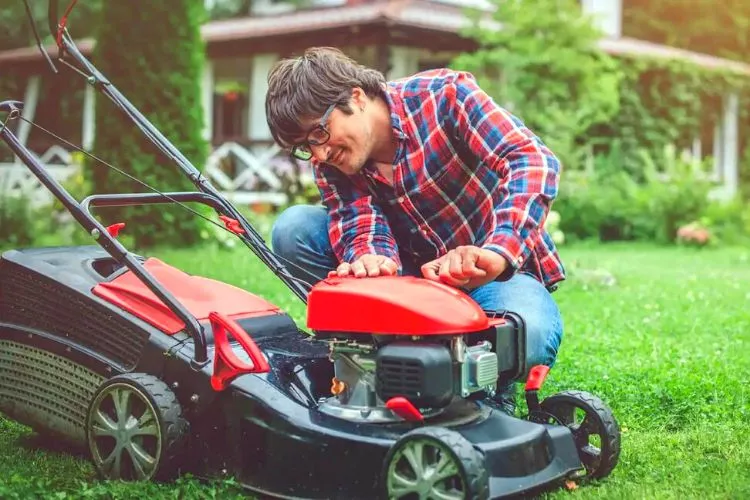
The rubbers help by acting as a buffer between the plastics and covering any moveable parts that don’t heat up too much. This can include the casing, around the fuel lines, around cables, connection points, switches and buttons, etc.
The blades are made of stainless steel, and the underdeck is often coated with graphite. Graphite helps by forming a hard, slippery coating to minimize the formation of corrosion and rust on all metal surfaces.
Some other parts that use metals include engine connections, the handle, wheel connectors, etc. All of these parts need to be plated with zinc, nickel, chrome, etc., to ensure they are resistant to moisture.
Importance of proper sealing and gasketing in lawnmowers
When the gaskets aren’t sealed properly, there is a much greater risk of oil leaks and moisture leaching problems. When the oil leaks, it not only needs to be constantly replaced but also contaminates the whole engine area.
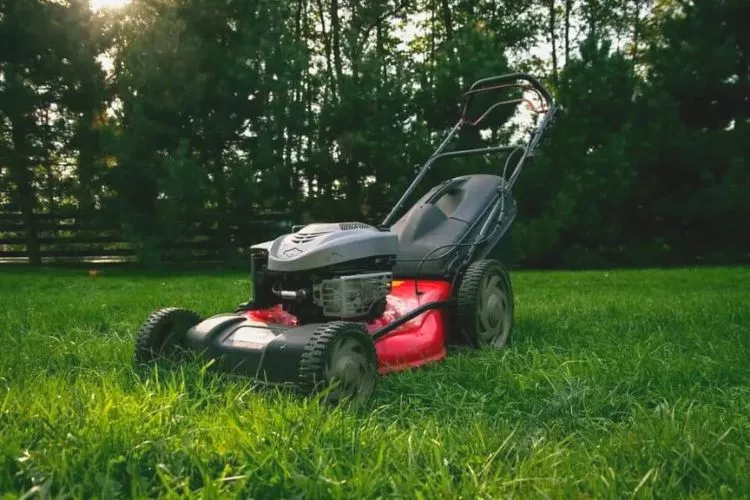
Additionally, if any moisture does find its way into the gasket, all of the oil becomes diluted and loses its ability to lubricate the engine. These types of issues can be disastrous to the overall condition of the lawn mower. They will severely hamper the engine’s ability to do its job, which essentially leaves you with a trip to the mechanic.
It’s recommended to check the seals or have them checked on regular maintenance schedules to ensure that you don’t run into any short or long term mowing complications.
Factors that Affect the Waterproofing of Lawn Mowers
From the moment you purchase a lawn mower from the shop, you can usually be assured that there is some degree of protection against minor amounts of moisture.
However, it’s not wise to simply rely on the way that they are manufactured when it comes to waterproofing. There are a number of external factors which can make a lawn mower lose its ability to handle any level of moisture. These include.
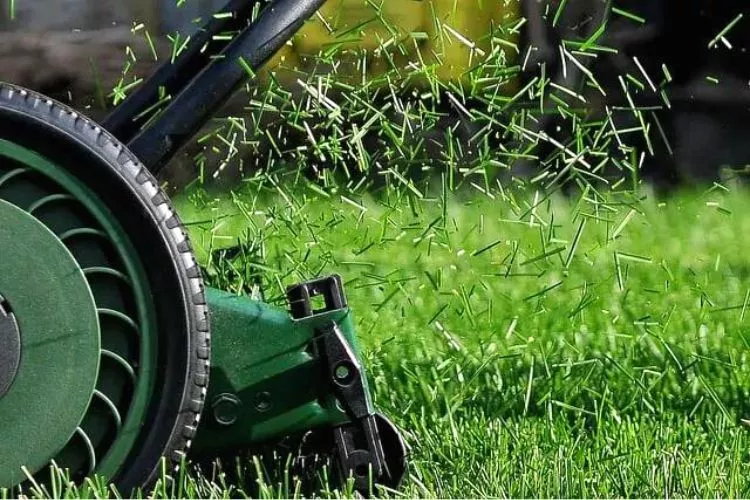
Weather conditions
Unfavorable weather conditions are generally the only factor that can completely stop you from mowing. That is of course as long as you have a well maintained lawn mower. Snow, ice, rain and even extreme heat can make mowing grass a nightmare.
Snow and ice won’t even allow you to see your lawn, let alone cut it. You’d have to wait until the snow melted and then allowed the grass to dry out completely before even thinking about getting out there again.
Rain can be a little deceptive. You may get light sleety spit type rain that dries out fast or full blown storms that need a few days of drying before considering mowing again.
Regular moisture checks should be completed to test the moisture before mowing in any conditions, regardless.
The sun was mentioned as more of a health and safety concern. Mowing a lawn is not for the faint hearted. It’s tough, it’s physical, and in excess heat, there’s every chance that you may suffer from heat stroke or dehydration if you aren’t going about it in a sun smart manner.
Always drink plenty of water and take regular breaks if possible to reduce the risk of overheating.
Frequency of use
The more a lawn mower is used (and possibly not maintained), the faster it will lose its strength and ability to deflect moisture. It’s as simple as that. The parts get worn, and things start to loosen up and crack. Rocks, debris, dirt, etc.
Fly around under the deck which causes long term wear and tear. It’s just one of those pieces of equipment that gets down and dirty and in doing so, its effectiveness to resist any water reduces.
Maintenance and upkeep
Maintenance and upkeep of anything you own should be taken seriously. Especially things that you use on a regular basis and help to make your job become that little bit easier. Lawnmowers are no different. It’s recommended to clean the mower after each use, including spraying the top and under the deck.
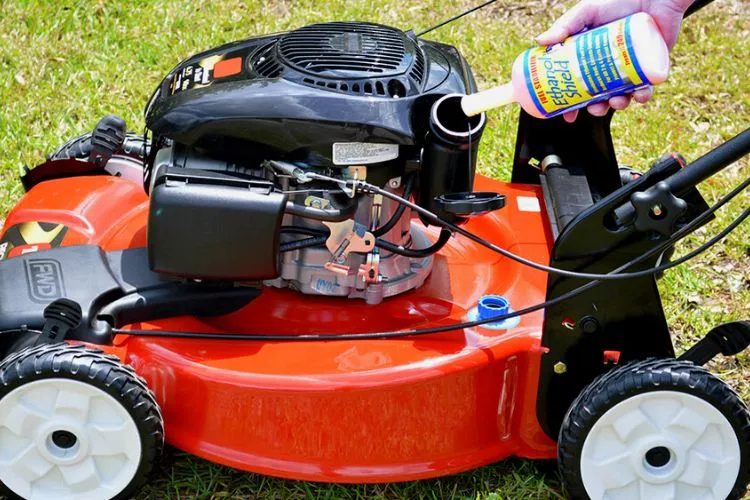
Allow these parts to completely dry and store your mower somewhere that stays dry, clean and ready for the next use. It’s also a good idea to check over any moving or connective type parts. Have a look at the condition of any cables, switches, buttons, screws, bolts, nuts, levers and even the deck.
Check the air filter condition and change it over every 10-15 uses depending on how large a job you are doing and at what frequency.
Lastly, have a look at the main driving parts, such as the engine and blades, to make sure that they are in perfect running order. We usually recommended that the mower gets a once over after each use to ensure it’s ready to go for the next mow session.
A well kept and maintained lawn mower will give it the best chance possible of resisting any leaks or other potential water damage.
Quality of the lawn mower
When it comes to equipment that you use on a regular basis, you can’t beat the quality, even with a potentially higher price tag. A better quality lawn mower generally uses better quality parts.
This includes better quality seals and a design that will usually allow the runoff of any excess moisture.
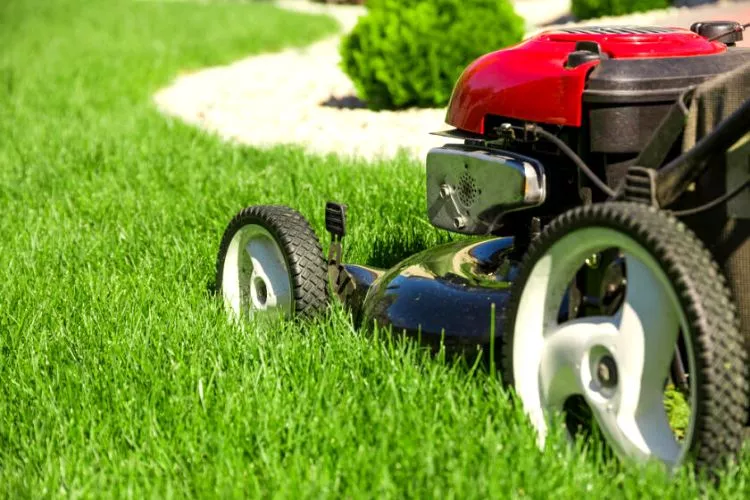
Even the underside of the deck can vary from model to model. We’ve used quality lawnmowers that have a molded deck which minimizes the pooling of any water in that region.
Furthermore, better quality mowers are known to have a higher level of insulation of all moving parts, such as switches, levers, knobs, buttons, etc.
How to Test if a Lawn Mower is Waterproof
Lawnmowers should be tested on their ability to resist water on a regular basis. They are definitely not designed to be submerged in water. However, they do serve the sole purpose of keeping all the moving parts dry and in good working order.
Therefore, completing these simple tests is extremely important for the longevity of the lawn mower. Let’s have a look at how you can test your mower so that it continues to keep moisture away from where it shouldn’t be.
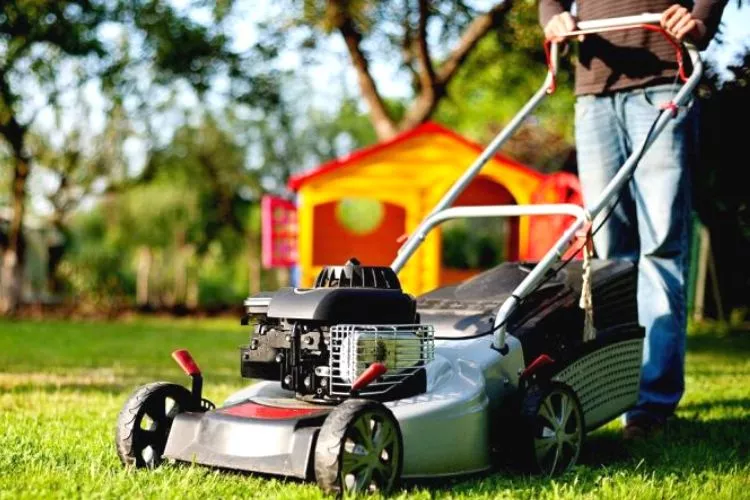
Visual inspection
Visual inspections are always first as an actionable step. Have a really good look over the mower from top to bottom. Check for cracks in the hood and deck. Have a look under the deck an hour or so after use and clean up.
If you notice any leakage from anywhere, it’s generally worth noting it down and checking again before the next use to ascertain whether the leaked water is going to cause long term problems or not.
Water resistance test
Once a visual inspection is complete, get a hose or bucket of water out and give the mower a good drenching to see if it gets inside any areas where it shouldn’t go. This can mean in any cracked plastic, under casings, through rubber buffers, inside switches, etc.
Make sure that you give the mower a bit of rigor to ensure that it is still as strong and protective as it was previously.
Functional test
A functional test can be performed by simply turning your mower on and checking for any leaks. You can also send it in for a mechanic to check over if you’re worried that there may be some kind of water related issue. They usually have all of the tools and knowledge to pull things apart and hone in on anything major.
How to Maintain Waterproofing in a Lawn Mower
The simplest way to keep your lawn mower in good working order and away from any moisture damage is by treating it with care. This can be obtained by taking the following actions:
Proper storage and handling
Always store your mower in a dry, well ventilated area after each use. The best places include garages and sheds or anywhere undercover with a base that allows any excess moisture to drain away. When it comes to handling, your lawn mower is going to get a ton of use over the years.
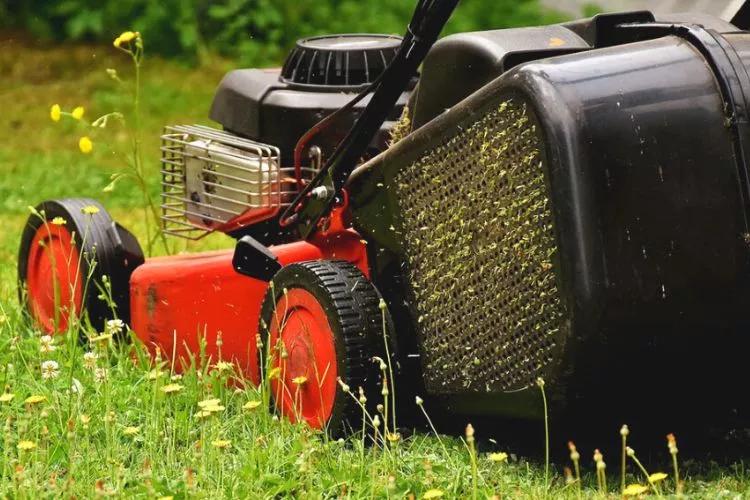
So it should be handled with care and respect. This includes using it in such a manner that it isn’t bashed around or driven over rocks or even roots to simply save time and convenience.
Regular cleaning and maintenance
It’s recommended that you give your lawn mower a really good clean after each use. This includes spraying all casing and both the top and underside of the deck. Try to remove as much grass and built up debris as you can. Allow it to dry once cleaning is complete.
Check all of the connections, switches, levers, knobs, buttons, levers, etc. Go over all of the larger parts as well, such as the engine, fuel lines, air filter, carburetor, blade, etc., to ensure everything is clean and in working order for the next time you go to use it. Keeping parts clean and maintained will prevent any moisture from seeping in.
Proper lubrication
Always lubricate the parts of your lawn mower according to the manufacturer’s specifications. Ensuring adequate lubrication is an important aspect to consider, as it allows all parts to move and function freely.
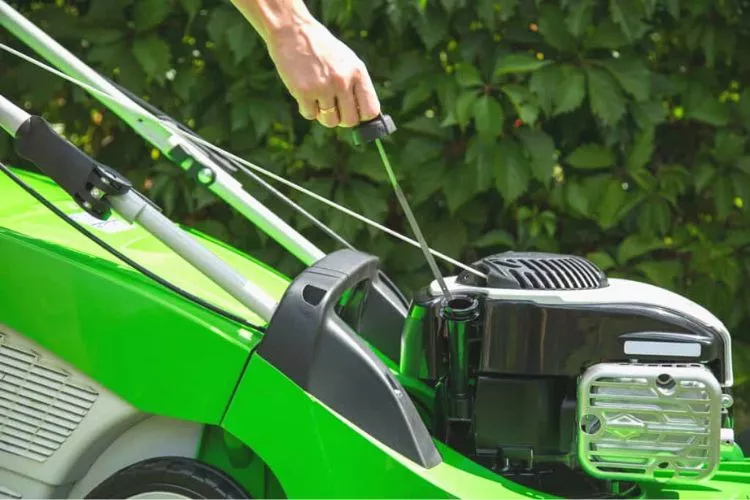
Without lubrication, everything will start to seize up, and you won’t have a lawn mower to work with anymore. Furthermore, when parts begin to seize, they are more susceptible to moisture leaks.
Replacement of worn or damaged parts
If you notice that any part becomes damaged, it’s best to go and have them replaced as soon as possible. It’s quite common to have a few cracks and holes due to wear and tear.
Unfortunately, though, small damages such as these will hamper the mower’s ability to deflect any water from potentially making its way in and causing further problems.
Conclusion:
Lawnmowers aren’t ‘waterproof’ per se, however, they are designed to be used outdoors where there is a chance that moisture can affect their job from being completed. That said, you wouldn’t want to get any of the parts too wet in the way of submerging or excess rain.
There are a number of parts, especially on the inside of the casing and under the deck, that need to remain dry to ensure that the mower can work to an optimal level. Regular maintenance and inspections will ultimately ensure their longevity.
We hope that this guide has been helpful. You can read about similar topics here on our website. Check back again soon for more.

